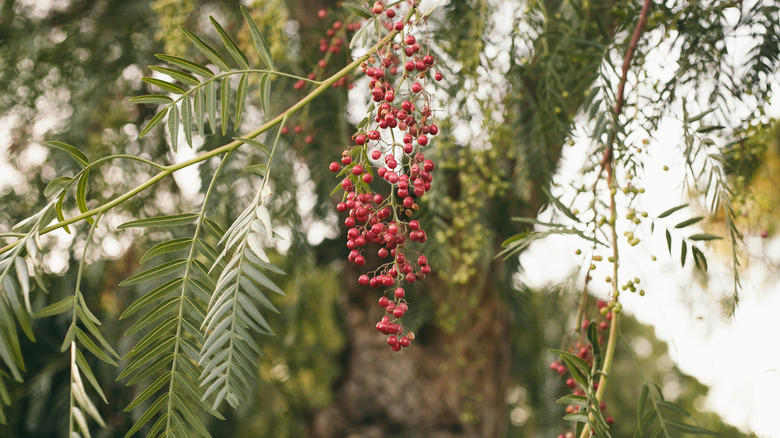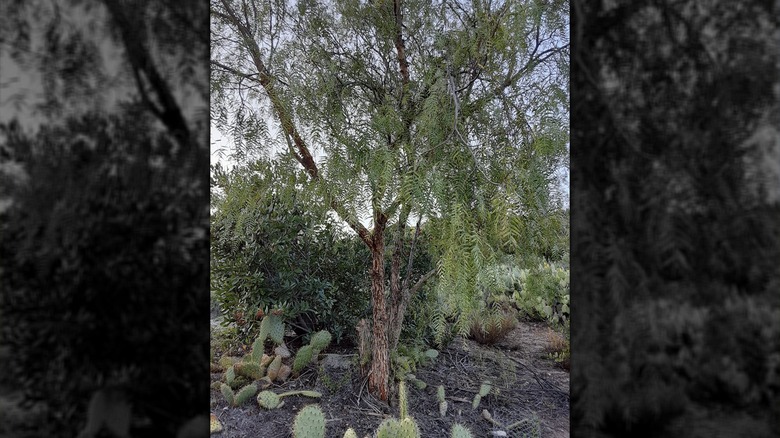The Downsides To Planting A California Pepper Tree In Your Yard
Schinus molle, commonly known as the California pepper tree or Peruvian pepper tree, is a fast-growing evergreen tree that is native to South America, particularly the desert-like portions of the Andes mountains. This tree was introduced to North America and typically grown as an ornamental or urban landscaping tree because of it's low-maintenance nature and ability to provide shade. Aromatic and elegant weeping fronds and small red peppercorn fruits make the California pepper tree a tempting pick for folks seeking drought-resistant plants that will thrive without much water, but unfortunately, planting this tree could bring you much more than you bargained for. While it may be beautiful, the California pepper tree is listed as mildly invasive, and planting even just one tree can have profound impacts on your local area.
The once-popular California pepper tree might seem like a fun addition to your yard or one of the unique spicy peppers you can grow in your garden, but growing one could be irresponsible if you live in a semiarid or desert region. Even if you aren't concerned about the tree spreading, California pepper trees are naturally messy, competitive, and can damage sidewalks and other concrete structures. Here's a deeper dive into how the California pepper tree came to be so invasive, other reasons why you may not want it in your yard, and some alternative trees that can offer you similar benefits without all the stress and mess.
California pepper tree invades natural landscapes
Outside of its native region, the California pepper tree is very widespread in California, but it also invades parts of Texas, Hawaii, Puerto Rico, South Africa, and Australia. It reproduces quickly in open fields, slopes, and scrublands like the chaparral biome of the Santa Monica and Santa Ynez mountains. Each tree can grow up to five stories tall, and mature trees produce thousands of pink peppercorn fruits in fall and winter. The California pepper tree's fruits are very attractive to local birds, which will eat them whole and later disperse the seeds through their droppings. It can also sprout new trees through its root system. Because of this uncontrolled spread, the trees have quickly overwhelmed landscapes in California, especially along natural waterways and disturbed areas.
Even so, the Schinus molle is only listed as mildly invasive by the California Invasive Plant Council, and is still relatively easy to purchase from nurseries, however discouraged it may be. If the invasive status isn't enough to stop you, the California pepper tree can wreak havoc on your yard in other ways. In addition to summoning birds (and their droppings), the tree sheds copious fruit litter and twigs which contain allelopathic terpenes, making it difficult for anything to grow below or around the tree. Its expansive and shallow root system will also push aggressively through concrete sidewalks and foundations. If you love the colorful allure of the California pepper tree, but there are plenty of other non-problematic fruit and berry trees to grow in your yard that birds love. Consider other drought-friendly options like the serviceberry (Amelanchier arborea), crape myrtle (Lagerstroemia), desert willow (Chilopsis linearis), or globe willow tree (Salix matsudana).

